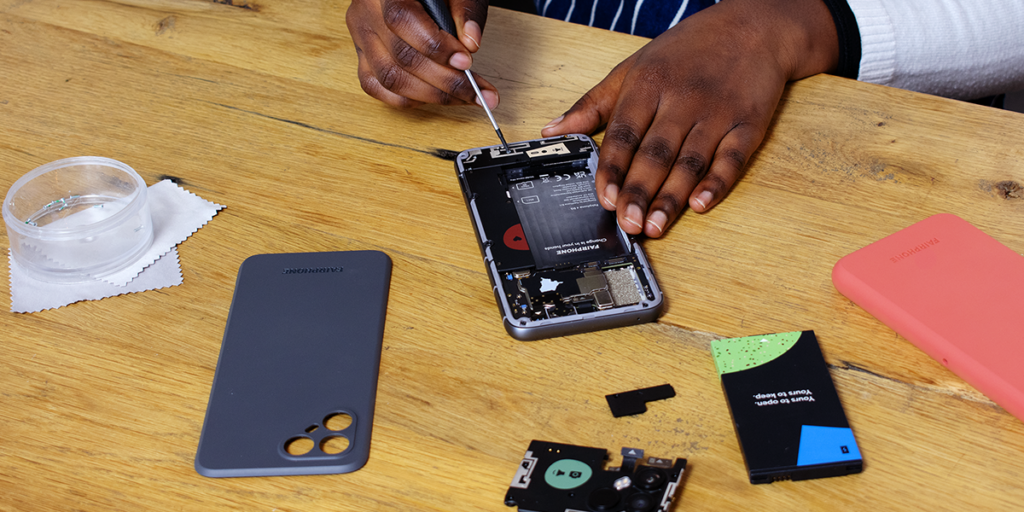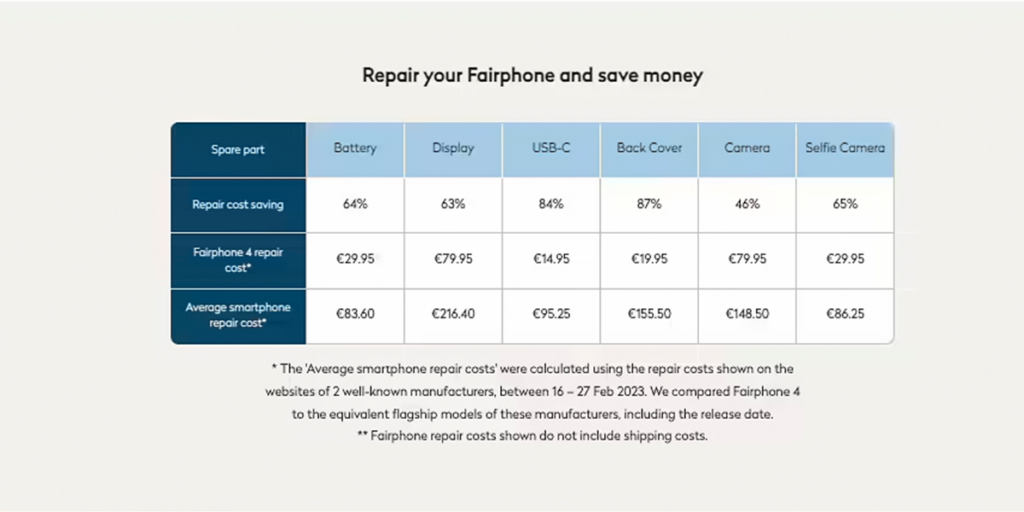Apple thinks modularity hinders device longevity. We don’t.
In a recent interview, Apple’s new head of hardware, John Ternus, was asked whether it would be conceivable to make iPhones even more modular and make them as easy to repair as a Fairphone.
He politely… but firmly… declined.
Ternus went on to say that there were a few challenges making smartphones both modular and long-lasting. His reasoning was that modular design would require more connectors between different parts of the phone, which would be more prone to failure over time. He also commented on a larger carbon footprint for these devices and modules, given that you have to use more material for these connectors.
On the face of it, one might be tempted to agree with him.
In the past, modular devices did need a lot more connectors between the different components inside for easy home repairs and upgrades. There is also some truth to how this modularity overhead (especially in Fairphone’s earlier models) tended to be higher compared to non-modular phones, because of the increased amount of material these modules required.
However…
…in the long run, Apple (and others like Apple) could – and should – make their devices more repairable. In the long run, phones can – and must – last longer. As smartphone manufacturers, we have an obligation to help people keep their devices running longer. It’s the only way we can cut down the number of smartphones produced every year, reducing the overall carbon footprint on an industry level.
75% of a smartphone’s carbon footprint occurs during production. The components responsible for the bulk of that footprint are the integrated circuits like the central processing unit (CPU), and the memory and WiFi chips. Every other component not only creates much less CO2 during production, but can also be designed to be easily replaceable and upgradeable. If we can ensure we are producing fewer phones by making existing chipsets and processors last longer, we automatically reduce the overall carbon footprint of the entire industry, manufacturer and consumer.

Affordable spare parts for easy DIY repairs make Fairphone a more economic and environmentally sound solution.
This brings us to the actual modules and the connectors Ternus is talking about. Over the last four generations of the Fairphone, we have been actively working to reduce the number of connectors we need for the different components the Fairphone houses. Compared to earlier models, the carbon footprint of the additional material needed to make a product modular accounts for approximately 1% of the overall production impact. As per the Fairphone 4 Life Cycle Assessment Report compiled by the Fraunhofer Institute for Reliability and Microintegration (IZM) in Germany, the design of Fairphone 4 also incorporates fewer connectors than earlier models and is comparable to other, non-modular latest generation models from other manufacturers.
This, simply put, means Ternus’ concern about more connectors and an increased carbon footprint is largely unfounded. By offering affordable spare parts for easy DIY repairs, Fairphone is offering a much more economic and a potentially more environmentally sound solution.
The way we see it, the issue is how Apple defines durability versus Fairphone. And it’s something that’s come up multiple times at a work group set up by the French government to define a new durability index, which Fairphone has been participating in since February 2022. The durability index is part of the French government’s larger national strategy to extend the lifespan of consumer electronics and cut down e-waste. It will replace the repairability index the French have had in place since 2021. The repairability index covers five categories in total currently, namely televisions, washing machines, laptops, lawn mowers and smartphones.
Fairphone’s approach to durability is a two-fold concept. On one hand, it should indicate a high reparability factor and on the other hand, its build quality should be robust. That means a high IP rating, weatherproofing, dust resistance, the works. One doesn’t counter the other.
Make no mistake, we are not saying Apple’s idea of durability is wrong. The brand value and awareness that Apple has in place ensures that iPhones do have a much higher chance of resale compared to other manufacturers currently. Apple’s approach to extended software support is also very commendable and shows their effort to extend their products’ usability. This scientific paper published by the Journal of Industrial Ecology implies that it is “rather products with longer economic lifespans (defined here as the time during which a product can be resold ‘as is’ via second hand markets) that are generally more sustainable than products that lose their value faster and have shorter economic lifespans.” However, this makes an even bigger case for repairability, especially for Apple. With modularity, Apple could extend their device longevity and economic lifespan beyond the industry average of three years. With modularity, Apple could even explore device upgradeability like Fairphone did in the past. Our easily repairable design allowed Fairphone 3 users to upgrade their cameras and other components to match the newer Fairphone 3+ for a fraction of the cost of the new device. In the long run, Apple’s environmental impact would be less damaging. We have successfully managed to extend the lifespan of our Fairphone 3 and 4 devices compared to the market average, meaning that most of them are now actively avoiding emissions that would have been caused by manufacturing new devices.
Apple could still argue for the ease of disassembly and waterproofing or against the reliability of modular connections or that upgradeability would be bad for future business. But even if Apple doesn’t opt for full modularity (we still think everybody should), there are still two key areas we think Apple should actively work on to increase repairability. One is the display. An easily replaceable display module will go a long way, especially with their customers. Given that there is currently no display glass on the market that is truly unbreakable and people are still dropping phones far and wide, display repair is crucial in ensuring the longevity of any smartphone regardless of how reliable its design may otherwise be.
Then there’s the question of removable batteries. Some argue that repair-averse design is actually advantageous for battery life. However, we are yet to see actual data to back this. The fact remains that over time, batteries will degrade. That’s normal wear-and-tear when it comes to smartphones. Degrading battery performance will inevitably shorten the smartphone’s life cycle. If the battery is not replaceable, that has much more impact on product life.
But then, there’s that thing about Apple and degrading batteries.
In December 2022, the French consumer rights group, Halte à l’Obsolescence Programmée (HOP), filed a complaint with the French courts accusing Apple of purposely designing non-repairable products. The HOP were the ones who also filed (and won) an earlier lawsuit against Apple for their Batterygate scandal. Yes, the same scandal where Apple admitted to selling iPhones with degraded batteries. And then deliberately slowing down processors so that the phones in question wouldn’t shut down. 32 lawsuits were filed in total across the world by various consumer rights groups. Apple was fined 25 million euro by the French courts, while in the United States, they were forced to agree to a $500 million settlement. We’re still waiting on the verdict from the United Kingdom.
So, in short, no, we’re not convinced by Ternus’ claims that modularity can harm longevity. If anything, modularity might have actually helped prevent Batterygate. Or at least cost much, much less.
Additional Reading
- How to address obsolescence in LCA studies – Perspectives on product use-time for a smartphone case study
- Decreasing obsolescence with modular smartphones? – An interdisciplinary perspective on lifecycles
- The “Environmental Activation Energy” of Modularity and Conditions for an Environmental Payback




